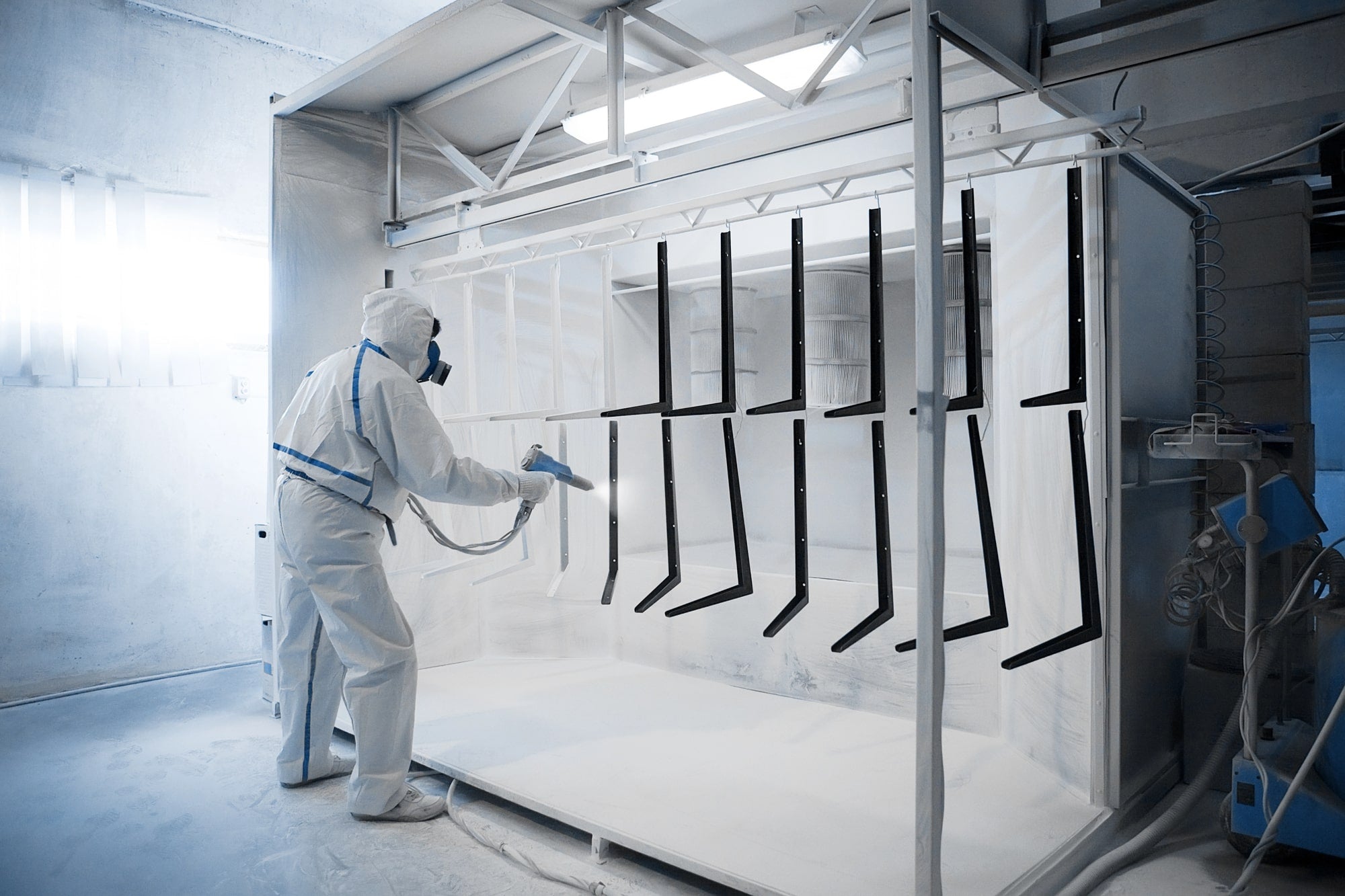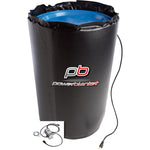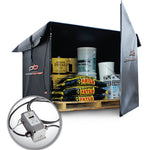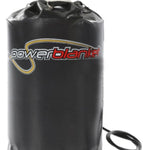You have no items in your shopping cart.
Article At-a-Glance
What is the Optimal Temperature for Powder Coating?
The ideal temperature range for curing powder coatings is typically between 300°F and 400°F (149°C and 204°C), with the specific temperature depending on the powder formulation, as maintaining this range ensures a durable, heat-resistant finish.
Key Takeaways
- Optimal Curing Range: Powder coatings typically cure best between 300°F and 400°F (149°C and 204°C), with specific temperatures depending on the powder formulation to ensure a durable finish.
- Impact of Temperature on Quality: Proper temperature management is crucial; incorrect curing temperatures can weaken the bond between the powder and metal, affecting corrosion resistance and durability.
- Heat Resistance Capabilities: Most powder coatings can withstand temperatures exceeding 400°F (204°C), but always consult the product data sheet for specific heat resistance details.
- Low-Temperature Curing Options: While some low-cure powders can be used at 300°F (149°C), they may result in less durable finishes, making it essential to adhere to recommended temperature ranges for optimal results.
- Temperature Control Tools: Utilizing tools like tote heaters can enhance temperature consistency, ensuring efficient powder application and reducing energy consumption during the curing process.
The Key to Flawless Vehicle Manufacturing: The Role of Temperature in Powder Coating
What is the lowest temperature for powder coating? While some say 300°F is viable, there are a few things you should definitely consider before jumping into powder coating at that temperature.
Powder Coating: The Key to Durable Vehicles and Efficient Processes
Powder coating has become an essential part of the vehicle manufacturing industry. This dry finishing technique offers a superior alternative to traditional liquid paint, delivering a tough, long-lasting coat on various car parts. Many manufacturers utilize tote heaters to pre-warm the powder before application, ensuring a smooth and consistent flow throughout the coating line. However, achieving a high-quality powder coat finish hinges on one crucial factor: temperature.
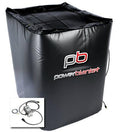
$2,186.99 USD
330 Gallon IBC Tote Heater w/ Lid Cover (120V)
For efficient temperature management during powder coating, consider using tote heaters. These heaters ensure that temperature-sensitive materials are pre-warmed to the correct temperature, promoting smooth application and reducing energy usage during curing.

Understanding Powder Coating in Vehicle Manufacturing
The powder coating process involves applying dry, finely-ground particles to a metal surface. These charged particles electrostatically adhere to the part before being baked in a curing oven. This process creates a hard, durable finish that boasts excellent qualities like:
- Heat resistance: Heat resistant powder coating can withstand high temperatures, making this finish ideal for engine components and parts exposed to heat generated by the vehicle.
- Durability: A proper powder coat offers superior resistance to chipping, scratching, and fading compared to traditional paint, ensuring a lasting aesthetic appeal for vehicles.
- Corrosion resistance: Powder coatings provide a strong barrier against rust and other forms of corrosion, protecting vital vehicle components.

The Role of Temperature in Powder Coating
Maintaining the right powder coat temperature is paramount for achieving these three desirable qualities. During the powder coating curing phase, temperature directly impacts the properties of the final coating, influencing factors such as corrosion and cracking prevention. For example:
- Improper curing temperature can lead to a weak bond between the powder and the metal, compromising the coating's ability to resist corrosion.
- Insufficient curing can affect the heat tolerance of the coating, potentially leading to premature breakdown when exposed to high temperatures.
What is the Lowest Temperature for Powder Coating?
While some specialized low-temperature cure powders exist, the minimum effective temperature typically falls around 300°F (149°C). Powder coating at lower temperatures can result in incomplete curing, leading to a weak and potentially ineffective finish.
Can You Powder Coat at 275°F Degrees?
No. 275°F typically falls below the recommended temperature range for most powder coatings. Generally, the ideal curing temperature falls between 300°F and 400°F (149°C and 204°C), depending on the specific powder formulation.
Can You Powder Coat at 300 Degrees?
Technically, yes. Powder coating at 300°F (149°C) is possible for some low-cure powder formulations. However, it's crucial to consider the implications. Curing at the lower end of the recommended temperature range might result in a slightly less durable finish with potentially lower heat and corrosion resistance.
For optimal results in vehicle manufacturing, where durability is paramount, staying within the recommended temperature range for the chosen powder is highly advisable. A consistent and evenly-spread temperature throughout the entire curing process is equally important to avoid inconsistencies in the final finish.
Challenges of Heat Management in Powder Coating
Maintaining high curing temperatures can be challenging, especially for larger components or those with complex geometries. Here's where tote heaters play a vital role.
Tote heaters are insulated containers specifically designed to preheat powder before it enters the spray booth. Pre-heating the powder ensures a more consistent flow during application and minimizes the energy required by the curing oven to reach the desired final temperature. This is why many manufacturers preheat barrels of product used in powder coating. Additionally, maintaining even heat distribution for totes is made easier with a tote heater.

Tote heaters are perfect for pre-warming powder coating material before applying.
What Temperature Can Powder Coat Paint Withstand?
Powder coated finishes offer excellent heat resistance, often exceeding 400°F (204°C). However, the maximum temperature a specific powder coating can withstand depends on the formulation. Consulting the product data sheet for the chosen powder is crucial to ensure it meets the application's specific heat requirements.
For cold weather climates, powder coating tends to hold up even when the temperature drops well below 0°F. However, using automotive heating blankets can help prevent previously existing cracks from expanding as engines heat up and cool back down rapidly in freezing temperatures.
Innovations in Powder Coating Temperature Control
The powder coating industry constantly innovates to improve temperature control and optimize the curing process. Tote heaters, as mentioned earlier, are a valuable tool for preheating powder and ensuring consistent application. Additionally, advancements in oven technology and insulation materials contribute to maintaining precise curing temperatures throughout the process.
The Environmental Benefits of Powder Coating
One of the significant advantages of powder coating is its environmental friendliness. In fact, our friends at Finishing Systems report that using powder coating instead of traditional painting reduces waste by 95%. Unlike traditional paints, powder coatings emit minimal volatile organic compounds (VOCs) during application. This significantly reduces air pollution and contributes to a healthier work environment.
Maintaining efficient temperature control through tote heaters and optimized curing processes further enhances these environmental benefits by minimizing energy consumption.
Temperature Control is a Must for Powder Coating
Temperature control is undeniably a critical factor in achieving high-quality powder coated finishes for vehicles. Utilizing the right tools, like tote heaters, along with innovative temperature management techniques, ensures consistent and efficient powder coating processes. By prioritizing temperature control, manufacturers not only guarantee the durability and aesthetics of their vehicles but also contribute to a more eco-friendly production environment.
When considering an efficient and environmentally conscious powder coating operation, remember: the right temperature is key!



